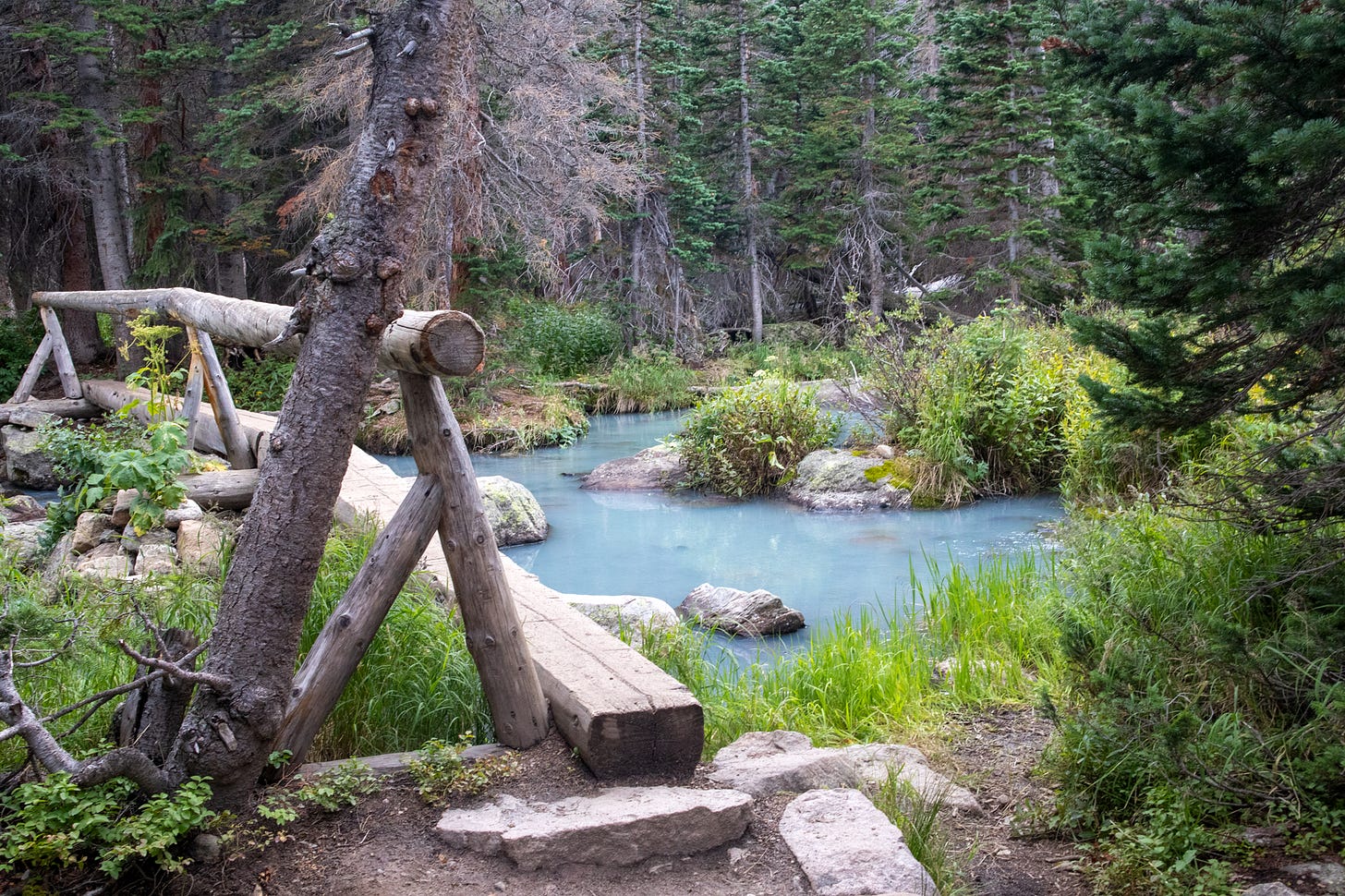
Chaos Canyon, Rocky Mountain National Park - On June 28, 2022, a massive section of Hallett Peak dislodged, disintegrated, and shape-shifted its way down into Upper Chaos Canyon. The rockfall was captured on video by two people recreating in the area at the time. Ryan Albert recorded this remarkable clip while fly fishing at Lake Haiyaha. Meanwhile, William Mondragon witnessed the event while bouldering below the rockslide with some friends. Remarkably, no one was injured by the landslide. In a news interview, Mondragon described the experience of seeing a mountain slope sliding toward him as so intense that it reminded him of taking psychedelics.
For me, not being there meant the event was far less memorable. I recall reading a handful of articles about the rockfall shortly after it occurred. But I missed Albert's and Mondragon's jaw-dropping videos, and I didn't fully grasp the magnitude of the rockslide until weeks later when some incredible images and accounts of a transformed Lake Haiyaha started popping up on social media.
Lake Haiyaha is one of my favorite destinations in Rocky Mountain National Park. You can reach the lake by various routes, but the Lake Haiyaha Trail is the most scenic (which might be why the trail is listed on the National Register of Historic Places.)
The trail begins at Bear Lake, climbs up past Nymph Lake, and then on to Dream Lake. Next, it enters Tyndall Gorge and turns south into Chaos Canyon. From there, it ascends to the tree line and arrives at the eastern edge of Lake Haiyaha.

Most day hikers (including myself) venture no further than the lake. To the west, Upper Chaos Canyon looms large—a vast jumble of boulders and scree. It's terrain that makes hikers cringe and retreat—and rock climbers drool and carry on.
Navigating the bulky rocks that border the eastern edge of Lake Haiyaha is challenging enough for me. When I finally arrive at the water's edge, I traditionally snap a few photos, have a snack, and relax before heading homeward.
It's been several years since I last visited Lake Haiyaha. I'd been planning a return hike in August when I stumbled across images showing the now-transformed (post-rockfall) Lake Haiyaha. Instead of its usual dark blue-green, the lake was a milky emerald. The images were surreal and stunning. I was anxious to see it for myself.
The following afternoon I hopped in the car, headed for the Bear Lake Area, and set out along the Lake Haiyaha Trail.
Just before arriving at Lake Haiyaha, I came to Chaos Creek, where it was immediately apparent that something unusual was underway. The shallow creek was a shimmering turquoise color, a preview of coming attractions. I snapped a few photos as I crossed over the bridge and then continued towards the lake.

I arrived at Lake Haiyaha at about 6 p.m. The sky was overcast, and dusk was setting in. And yet, despite the dwindling light, the lake gleamed a rich jade color.

I lingered and took pictures for as long as possible before I started my hike back to the trailhead.
After my hike, one nagging question remained: why did a rockfall high above Lake Haiyaha so drastically change the color of the waters below? To answer this question, I read up on rockslides, glacial deposits, and alpine lakes. I even pulled out my Essentials of Geology textbook.
Chaos Canyon, like all of Rocky Mountain National Park, is a terrain shaped by glaciation. As such, the canyon contains pockets of glacial till—heterogeneous mixtures of rocky sediments of various sizes.
The rockfall exposed some of this glacial till, and subsequent rains washed the finest sediments (called glacial flour) into the lake below. Glacial flour is so fine that it doesn't sink to the bottom of the lake. Instead, it becomes suspended in the water, causing it to change color and take on a milky appearance.
And so, to turn Lake Haiyaha turquoise, all you need is a rockfall up-valley, some glacial flour, a spot of rain, and a bit of time. Then hey presto! You've got yourself a mesmerizing, photogenic, glowing jade-colored lake!

References
Witness the New Color at Lake Haiyaha by Dawn Wilson (Estes Park Trail-Gazette)
Glacial Till and Glacial Flour (National Park Service)
Essentials of Geology by Frederick K. Lutgens and Edward J. Tarbuck. 2015. Pearson Education Inc.



